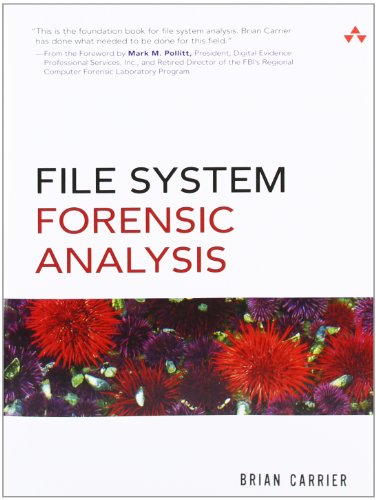File System Forensic Analysis ebook
Par patton carol le jeudi, avril 6 2017, 09:32 - Lien permanent
File System Forensic Analysis. Brian Carrier

File.System.Forensic.Analysis.pdf
ISBN: 0321268172,9780321268174 | 600 pages | 15 Mb

File System Forensic Analysis Brian Carrier
Publisher: Addison-Wesley Professional
Fundamentals of Modern Operating Systems Introduction & Forensics Investigations Handbook of Digital Forensics and Investigation, by Eoghan Casey, Elsevier Academic Press. It provides more information about a file, such as file ownership, along with more control over files and folders. File system, in addition, can also be used to hide data. If you'd like to learn how to become a computer forensics investigator, also known as a computer forensic specialist, this article will guide you through the requirements as well as career pathways and salary information. File System: Forensic Analysis. Finally, we will cover the emerging intersection of digital forensics and traditional security, specifically mobile app security and continuous forensic monitoring of key systems. As forensic analysts, we are providing someone with our account of a real person's actions and events. The author of the " Sleuth Kit " is Brian Carrier which happens to also be the author of a wonderful book called "File System Forensic Analysis" that is a must read for any serious file system analyst. We are telling people through our discoveries what someone did or didn't do on a particular system. IOS forensics - Physical, logical and file system extraction, decoding and user lock bypass. Digital Forensics with Open Source Tools: Using Open Source Platform Tools for Performing Computer Forensics on Target Systems: Windows, Mac, Linux, Unix, 4) Chapter 8 on File Analysis is the longest chapter (41 pages in length), covering analysis of image files, audio and video files, archive files, and documents. The guys at X-Ways Forensics introduced the ability to traverse for and process previously existing files from Volume Shadow Copies and System Volume Information files. Live Analysis: when you are use the OS or othe system resources being investigated to find evidence. Most digital evidence is stored within the computer's file system, but understanding how file systems work is one of the most technically challenging concepts for a digital investigator because there exists little documentation. This chapter breaks down a file's content and metadata. The most famous ways are data encryption and steganography. Chapter 1: Digital Crime Scene Investigation Process. The Definitive Guide to File System Analysis: Key Concepts and Hands-on Techniques Most digital evidence is stored within the computer's file system, but. Backup files are provided from the “custodian”. · Physical extraction from locked and unlocked Nokia BB5 devices. NTFS offers significant improvements over previous FAT file systems.